Thingpower Workshop
UdK Berlin

A lecture and workshop in response to Jane Bennett’s Vibrant Matter and Rachel Armstrong’s Vibrant Architecture. Organized by Prof. Nathalie Bredella, Prof. Sven Pfeiffer and assisted by Christian Schmidts of UdK Berlin.
Bennett develops the concept of Thing Power, the innate force that all material things exert in the universe, and Armstrong explores the potential of this theory for designers. Instead of seeing electronics as a branch of atomism, a positivist world view which ignores context and operates in a deterministic space, this presentation framed electronics as a particularly potent form of vibrant matter by giving examples of the materiality of electronics, the artisanal nature of early electronics prototypes and methods, and the idiosyncrasy inherent in mass production of electronics integrated circuits.
Bennett and Armstrong’s work point to the potential for designers to harness Thingpower by moving beyond the limits of reason to instill in designed objects a kind of animus. The workshop portion of the weekend consisted of a solar engine tutorial where students made a simple circuit to collect solar energy and direct it to different ends, inviting the participants to instill a kind of Thingpower in the resulting creations by combining solar engines in different ways to create synthetic ecosystems. Inspired by Bennett and Armstrong’s use of speculative fiction as a design tool, Professor Bredella will follow this with a creative writing workshop where students will begin writing stories about how the solar engines could interact at an urban scale.





Here are some slides from the lecture:
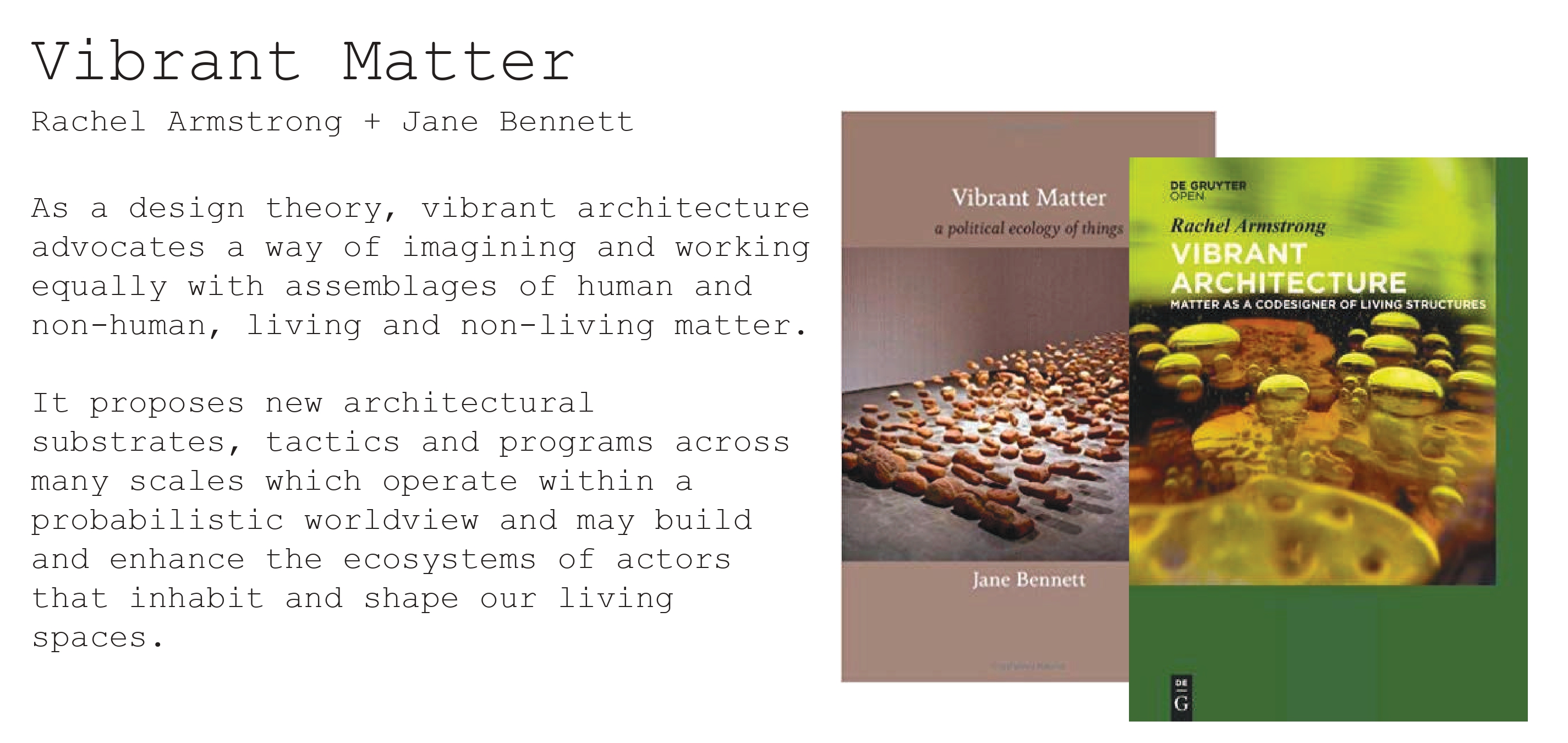
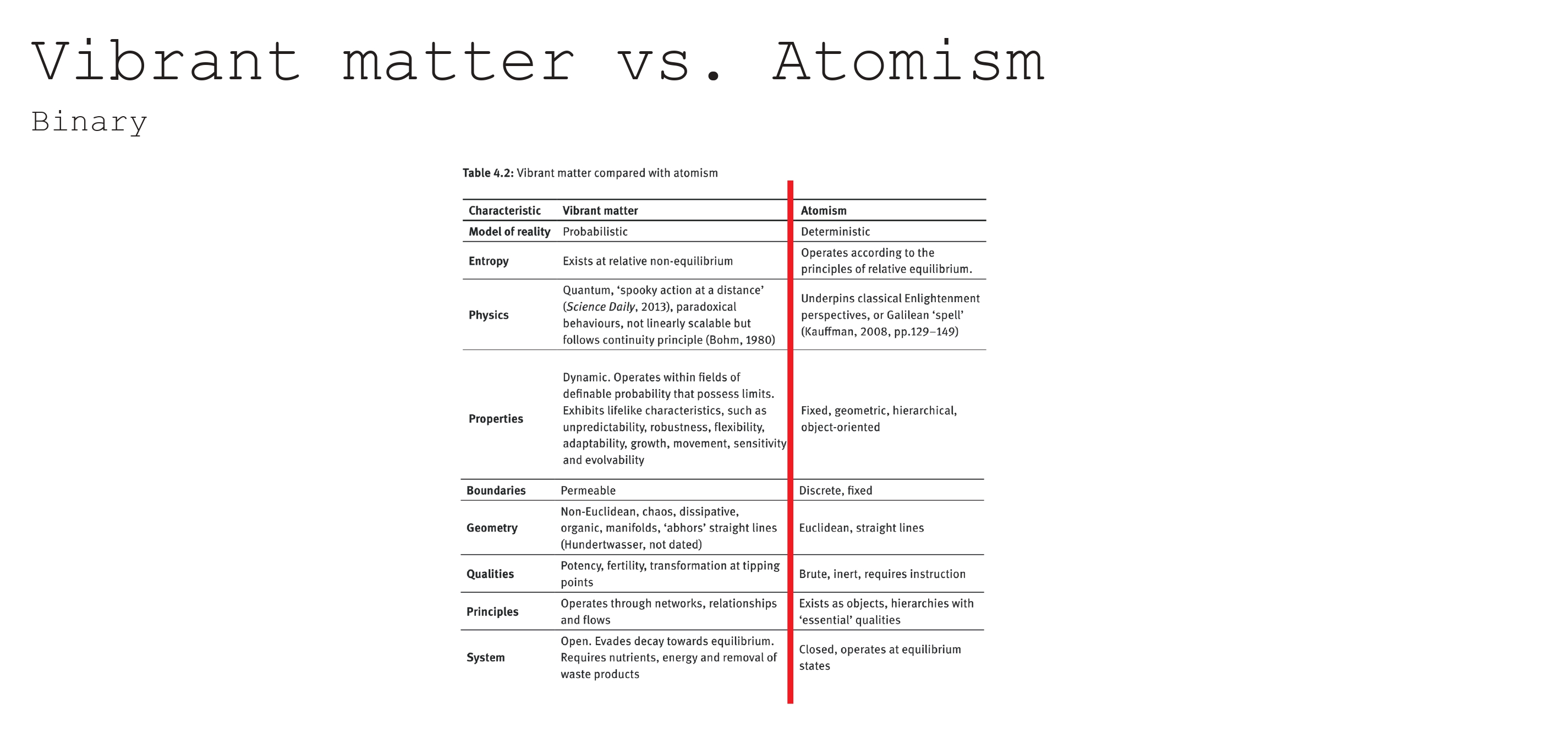 These first slides introduce the binary that Armstrong introduces between Vibrant Matter and Atomism. Electronics is introduced as a kind of applied atomism, which presents many of the qualities that Armstrong is looking for in Vibrant Matter: materiality, idiosyncracy, human-mineral partnerships, unforeseen epiphenomena, experimental and artisinal assemblages.
These first slides introduce the binary that Armstrong introduces between Vibrant Matter and Atomism. Electronics is introduced as a kind of applied atomism, which presents many of the qualities that Armstrong is looking for in Vibrant Matter: materiality, idiosyncracy, human-mineral partnerships, unforeseen epiphenomena, experimental and artisinal assemblages.
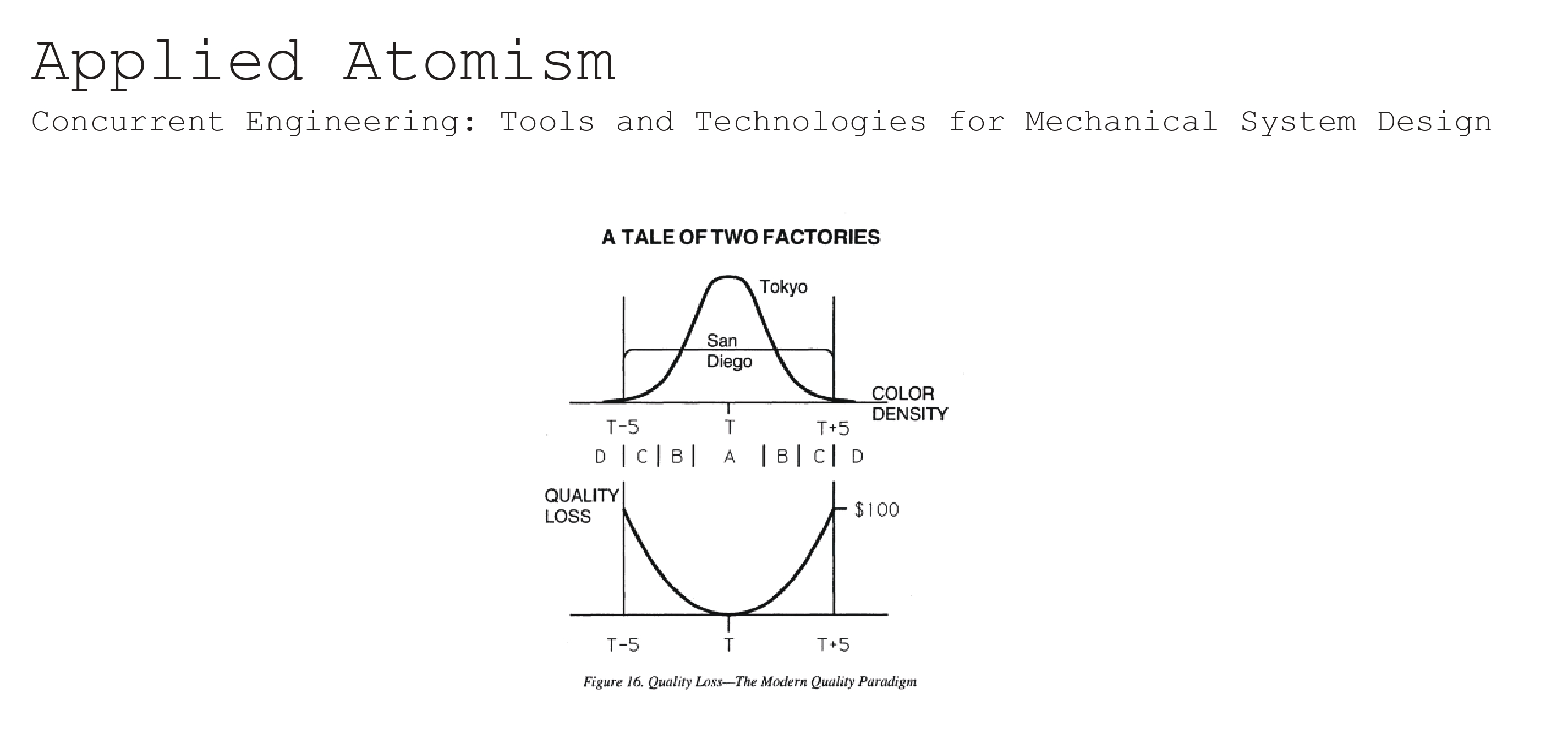
This slide talks about the variations that exist in different factories making the same products. In this particular example two factories producing the same television set had different color densities.

There are variations within mass produced products like integrated circuits based on which parts of the silicon disk they are printed. This can lead to the so-called chip lottery, where certain graphics cards, for instance, may be significantly faster than other chips off the same production line.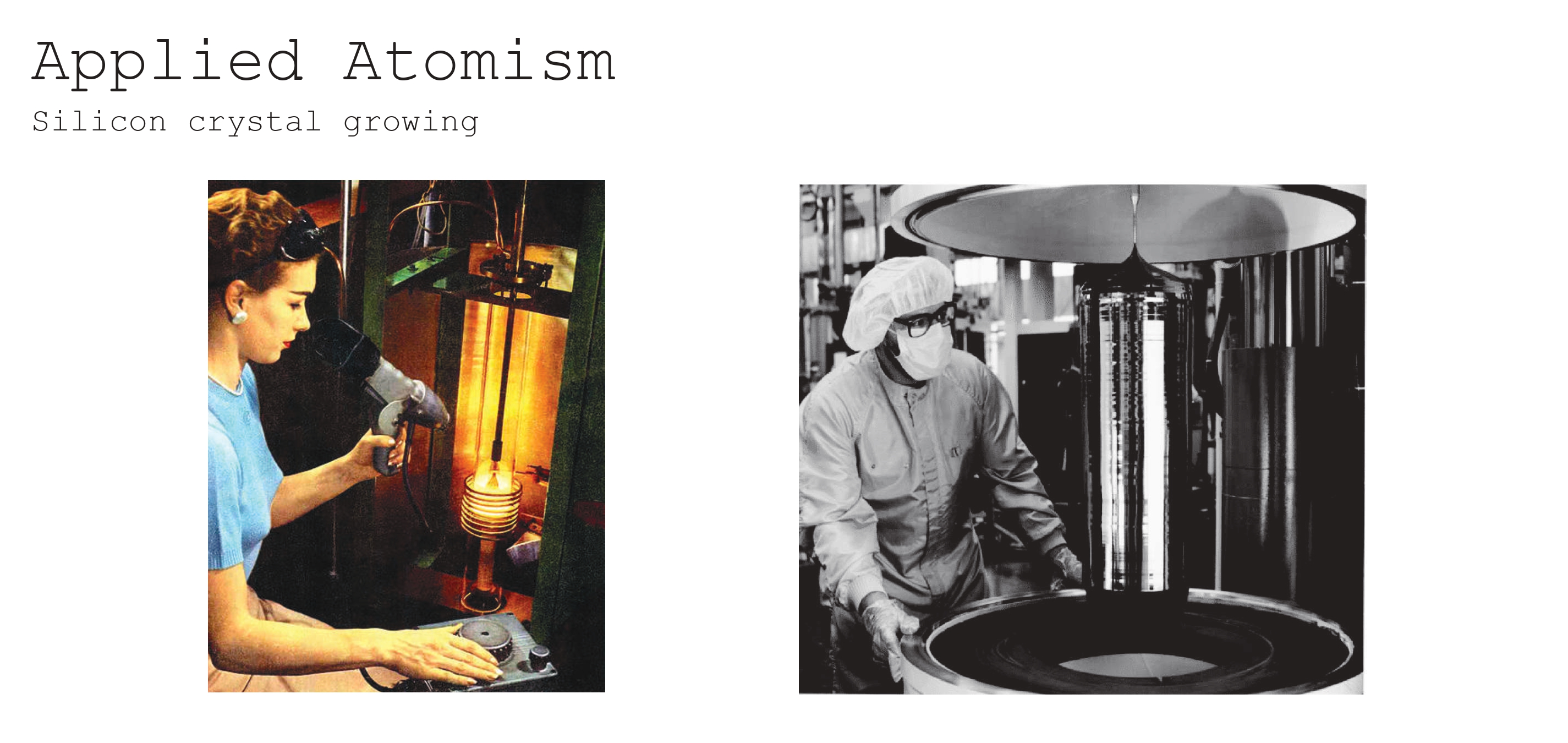
Silicon for integrated circuits is actually grown in a laboratory setting. The massive lattice is so strong that it is supported by just the tiny thread at the top.
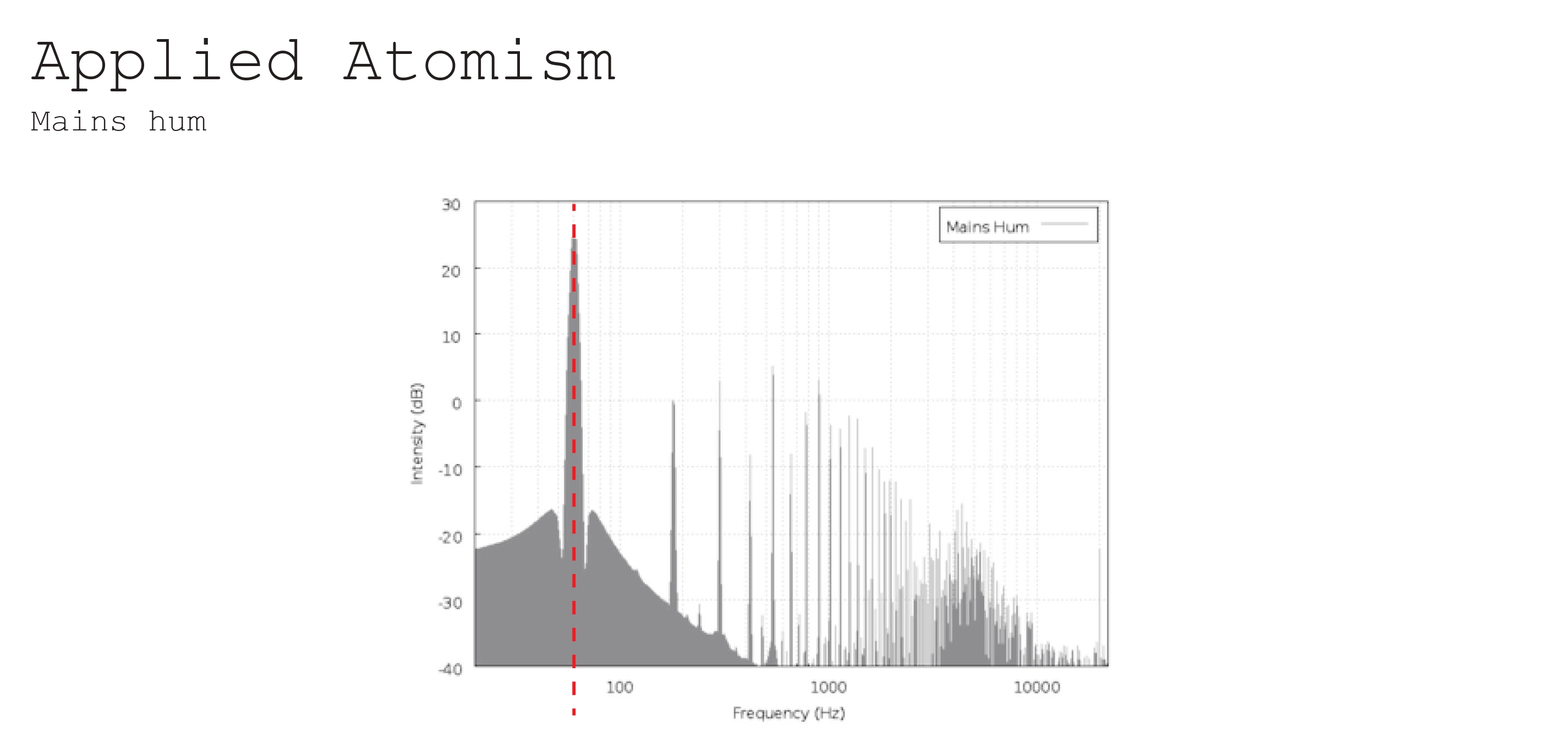
Mains Hum is the phenomenon of electrical instruments picking up the 50Hz or 60Hz (depending on the country) oscillation, along with its harmonics, created by the power grid.
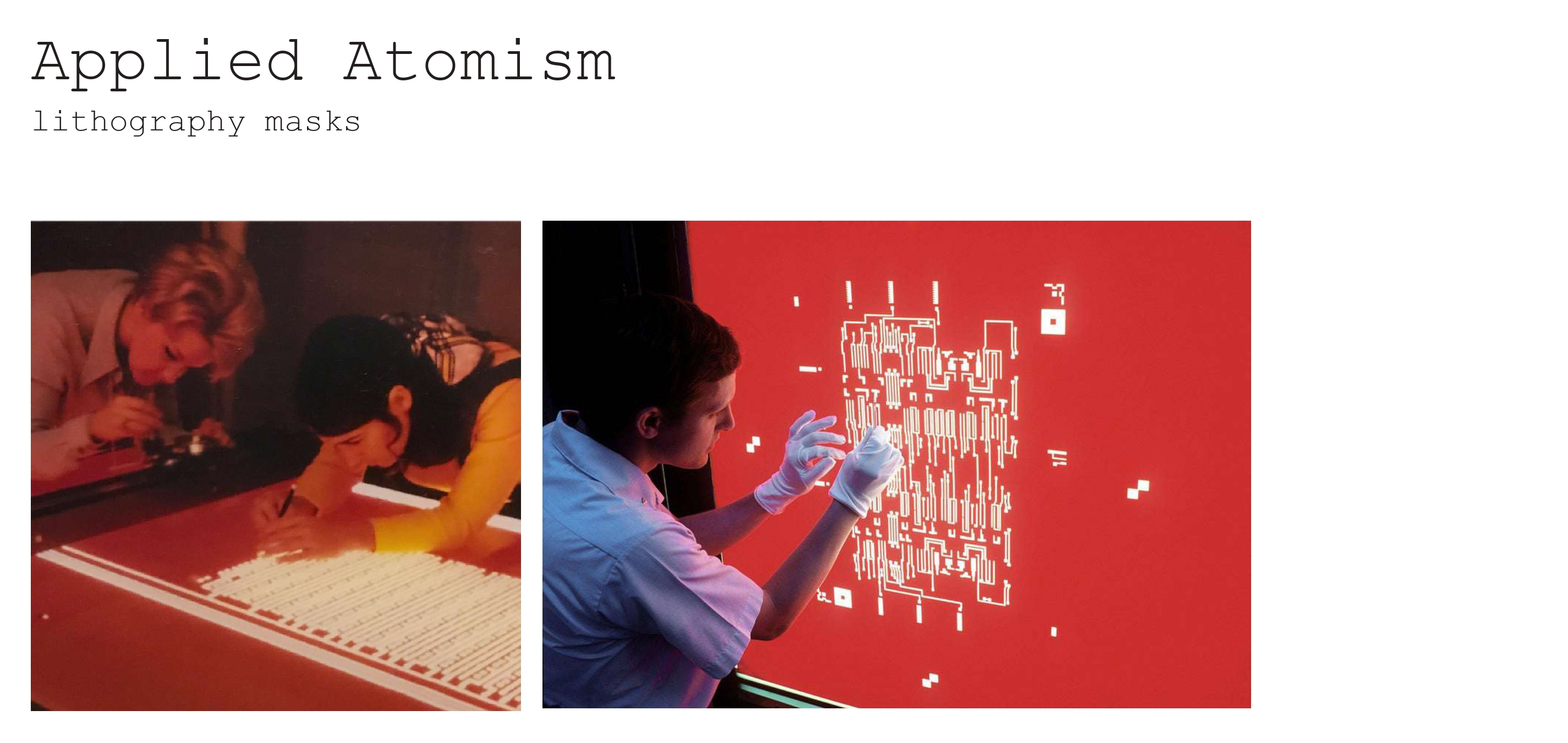
To print an integrated circuit, stencils were used. These were once peeled by hand.
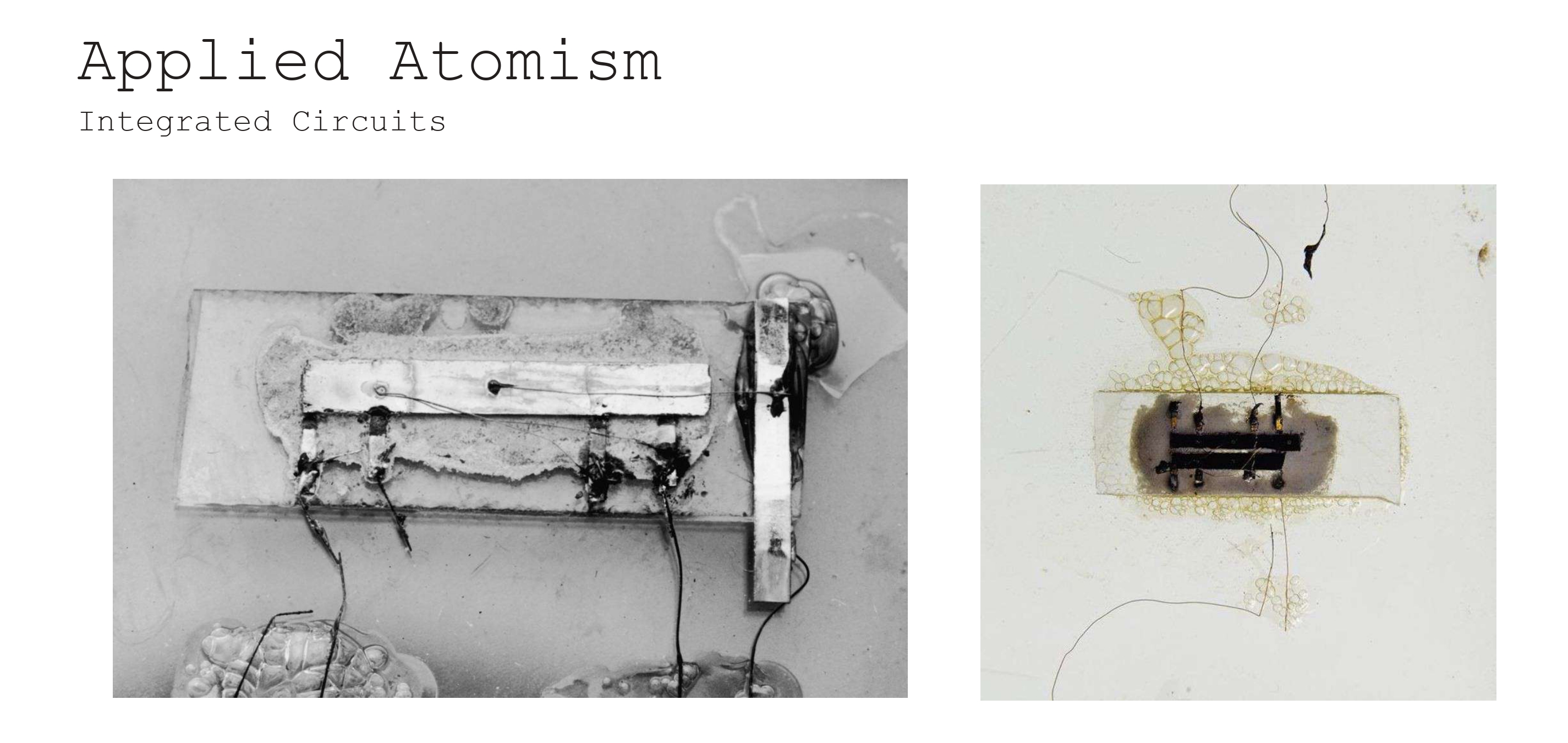
Early integrated components were experimental and looked like artist assemblages.
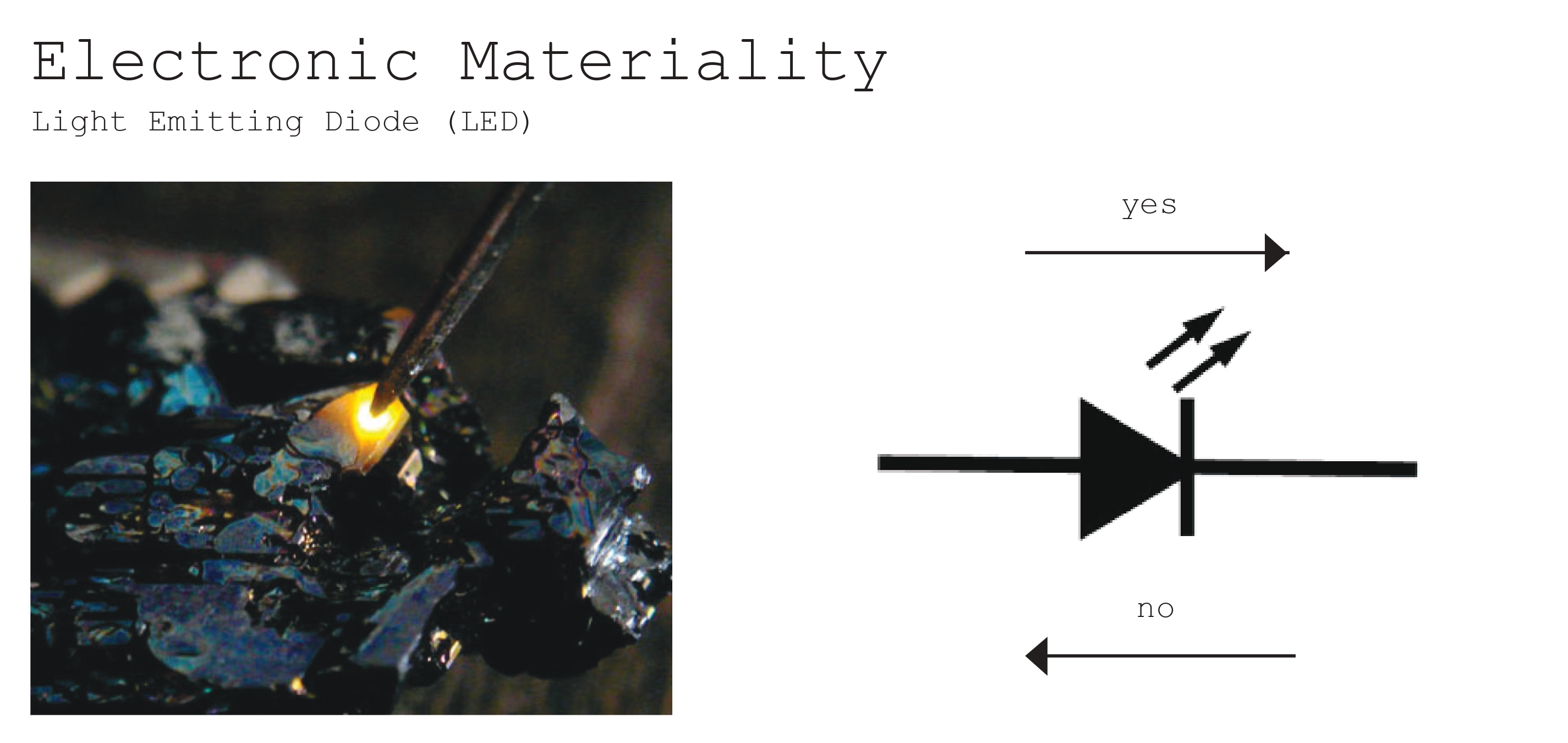
Electronic components are processed minerals. The LED can be made from a piece of silicon Carbide. Other components like the capacitors and resistor are similarly made from metal and rocks primarily.